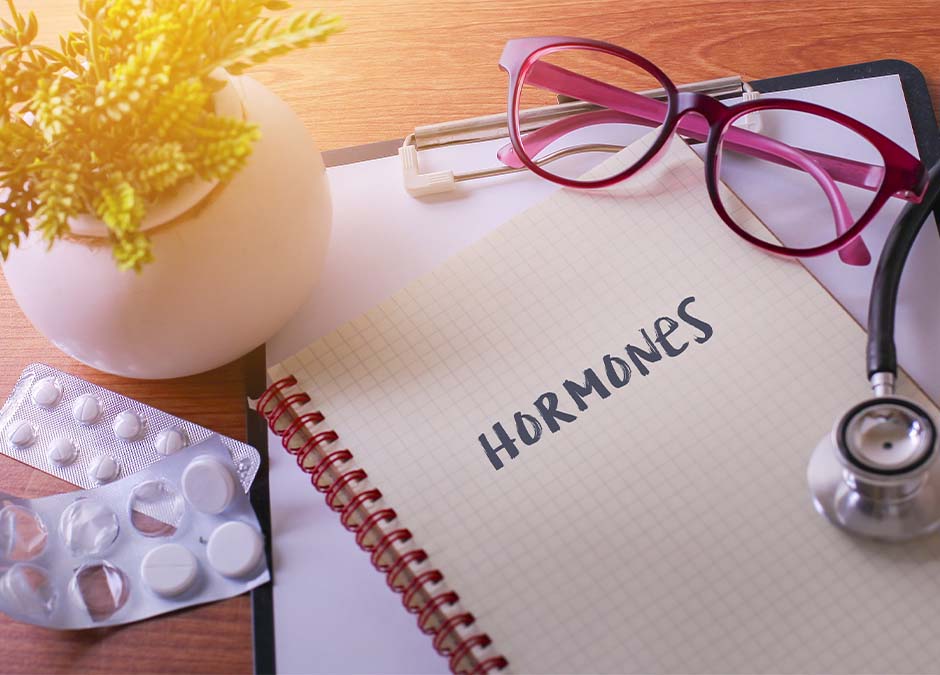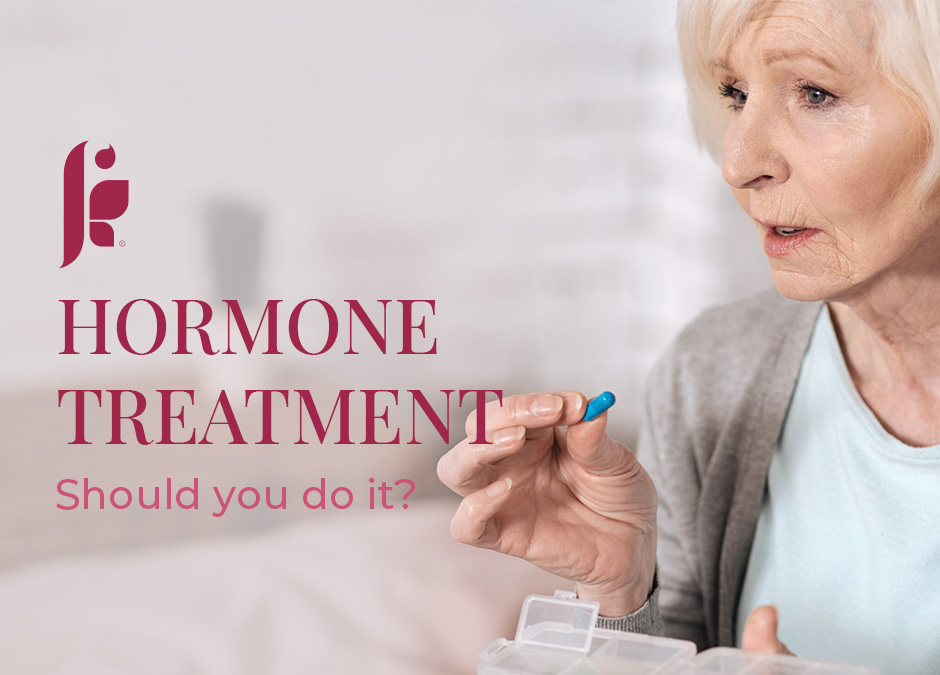Hormone therapy: Is it right for you?
Youfemism has proven effective in alleviating the symptoms of menopause and PMS. There are no known harmful side effects. For some of you who suffer these symptoms, HRT may be a consideration. Hormone therapy was once routinely used to treat menopausal symptoms and protect long-term health. Then large clinical trials showed health risks. What does this mean for you?
By Mayo Clinic Staff
Hormone replacement therapy is medication that contains female hormones. You take the medication to replace the estrogen that your body stops making during menopause. It is used to treat common menopausal symptoms. Your natural hormones cannot be replaced with human-derived hormones. As such, traditional HRT has used synthetic and animal-derived hormones that closely mimic their human counterparts and can therefore be used by the body in much the same way. In contrast, the bioidentical hormones used in BHRT are derived from naturally-occurring plant molecules, such as yams and soy, and are chemically identical to human hormones. Because they are an exact match, your body reacts to them as it would your own hormones.
There are risks associated with using hormone therapy. These risks depend on the type, the dose, how long the medication is taken, and your individual health risks. For best results, hormone therapy should be tailored to each person and re-evaluated every so often to be sure the benefits still outweigh the risks.

What are the basic types of hormone therapy?
Systemic estrogen — which comes in pill, skin patch, ring, gel, cream or spray form — typically contains a higher dose of estrogen that is absorbed throughout the body. It can be used to treat any of the common symptoms of menopause.
Low-dose vaginal preparations of estrogen — which come in cream, tablet or ring form — low-dose vaginal preparations are usually only used to treat the vaginal and urinary symptoms of menopause.
If you haven’t had your uterus removed, your doctor will typically prescribe estrogen along with progesterone or progestin (progesterone-like medication). This is because estrogen alone, when not balanced by progesterone, can stimulate growth of the lining of the uterus, increasing the risk of endometrial cancer. If you have had your uterus removed (hysterectomy), you may not need to take progestin.
What are the risks of hormone therapy?
In the largest clinical trial to date, hormone replacement therapy that consisted of an estrogen-progestin pill (Prempro) increased the risk of certain serious conditions, including:
- Heart disease
- Stroke
- Blood clots
- Breast cancer
- Subsequent studies have suggested that these risks vary depending on:
Age. Women who begin hormone therapy at age 60 or older or more than 10 years from the onset of menopause are at greater risk of the above conditions. But if hormone therapy is started before the age of 60 or within 10 years of menopause, the benefits appear to outweigh the risks.

Type of hormone therapy.
Health history. Your family history and your personal medical history and risk of cancer, heart disease, stroke, blood clots, liver disease, and osteoporosis are important factors in determining whether hormone replacement therapy is appropriate for you.
All these risks should be considered by you and your doctor when deciding whether hormone therapy might be an option for you.
Who can benefit from hormone therapy?
The benefits of hormone therapy may outweigh the risks if you’re healthy and you:
- Have moderate to severe hot flashes.
- Have other symptoms of menopause. Estrogen can ease vaginal symptoms of menopause, such as dryness, itching, burning, and discomfort with intercourse.
- Need to prevent bone loss or fractures. Systemic estrogen helps protect against the bone-thinning disease called osteoporosis. However, doctors usually recommend medications called bisphosphonates to treat osteoporosis. But estrogen therapy may help if you either can’t tolerate or aren’t benefiting from other treatments.
Experience early menopause or have estrogen deficiency. If you had your ovaries surgically removed before age 45, stopped having periods before age 45 (premature or early menopause), or lost normal function of your ovaries before age 40 (primary ovarian insufficiency), your body has been exposed to less estrogen than the bodies of women who experience typical menopause. Estrogen therapy can help decrease your risk of certain health conditions, including osteoporosis, heart disease, stroke, dementia, and mood changes.
If you take hormone therapy, how can you reduce risk?
Talk to your doctor about these strategies:
Find the best product and delivery method for you. You can take estrogen in the form of a pill, patch, gel, vaginal cream, or slow-releasing suppository or ring that you place in your vagina. If you experience only vaginal symptoms related to menopause, estrogen in a low-dose vaginal cream, tablet, or ring is usually a better choice than an oral pill or a skin patch.
Minimize the amount of medication you take. Use the lowest effective dose for the shortest amount of time needed to treat your symptoms. If you’re younger than age 45, you need enough estrogen to provide protection against the long-term health effects of estrogen deficiency. If you have lasting menopausal symptoms that significantly impair your quality of life, your doctor may recommend longer-term treatment.
Seek regular follow-up care. See your doctor regularly to ensure that the benefits of hormone therapy continue to outweigh the risks, and for screenings such as mammograms and pelvic exams.
Make healthy lifestyle choices. Include physical activity and exercise in your daily routine, eat a healthy diet, maintain a healthy weight, don’t smoke, limit alcohol, manage stress, and manage chronic health conditions, such as high cholesterol or high blood pressure.
If you haven’t had a hysterectomy and are using systemic estrogen therapy, you’ll also need progestin. Your doctor can help you find the delivery method that offers the most benefits and convenience with the least risks and cost.
What can you do if you can’t take hormone therapy?
You may be able to manage menopausal hot flashes with healthy lifestyle approaches such as keeping cool, limiting caffeinated beverages and alcohol, and practicing paced relaxed breathing or other relaxation techniques. There are also several nonhormone prescription remedies that may help relieve hot flashes like Youfemism – Women’s Essential Hormone Balancing Cream.
For vaginal concerns such as dryness or painful intercourse, a vaginal moisturizer or lubricant may provide relief. Youfemism helps create hormonal balance so your vagina remains healthy.
The bottom line: Hormone therapy isn’t all good or all bad
To determine if hormone therapy is a good treatment option for you, talk to your doctor about your individual symptoms and health risks. Be sure to keep the conversation going throughout your menopausal years.
As researchers learn more about hormone therapy and other menopausal treatments, recommendations may change. If you continue to have bothersome menopausal symptoms review treatment options with your doctor on a regular basis.
With love, Youfemism

